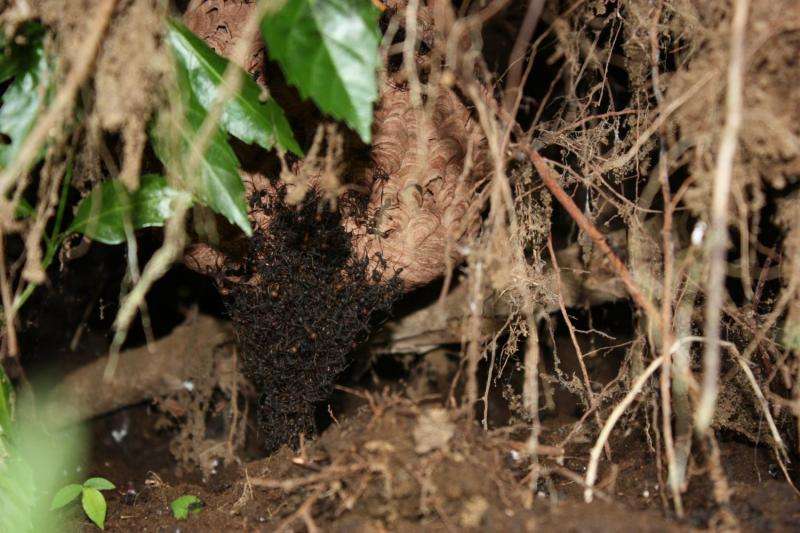Underground ants can't take the heat: Climage change models may not look closely enough at microhabitats

Army ants, the nomadic swarming predators underfoot in the jungle, can take down a colony of prey animals without breaking a sweat. But certain army ant species can't take the heat.
According to a new study from Drexel University, underground species of army ants are much less tolerant of high temperatures than their aboveground relatives—and that difference in thermal tolerance could mean that many climate change models lack a key element of how animal physiology could affect responses to changing environments.
At face value, this is not surprising, noted Sean O'Donnell, PhD, a professor in Drexel's College of Arts and Sciences and senior author of the study published in the Journal of Animal Ecology. Ants that live above ground are exposed to higher temperatures than subterranean ants, so they should be expected to tolerate hotter conditions—but the relationship between microhabitat and heat tolerance simply hadn't been tested before. No one knew whether the subterranean ant species might have been capable of handling high temperatures, even if they prefer cooler ones.
Current models of climate change are built on predictions that animal species may shift their geographic ranges to new latitudes or elevations when the temperature rises. But these models typically use temperature averages taken at a macro resolution—commonly measured 1 meter above ground, and encompassing areas of a square kilometer or more—and they don't generally take into account that different species have varied levels of heat tolerance.
"A few inches of soil can make a big difference in temperature," said Kaitlin Baudier, a doctoral student in O'Donnell's lab and lead author of the study.
To look at whether factors like microhabitat preference—living above ground vs. below ground—affected an animal's thermal range, Baudier, O'Donnell and colleagues looked at nine closely related species of army ants that lived in the same general area in Costa Rica's tropical forests. They sampled ants from each of the species and experimentally tested their maximum heat tolerance in the lab.
They found that the best predictor of heat tolerance was how active the ant species was in above-ground environments. Above-ground army ants were most tolerant of higher temperatures, while species that lived mostly below-ground had much lower tolerance to heat, and species that used a combination of above- and below-ground environments had intermediate levels of tolerance.
Body size and habitat type also interacted, so that in comparisons of same-size individuals from different species, the species that are active above-ground were more heat tolerant—another indicator that habitat use signals the species' tolerance to heat. Within each species, smaller ants were more sensitive to rising temperatures than the larger ants of the same type.
"The takeaway message is that an animal's adaptation to its microhabitat is relevant to its thermal physiology," said Baudier.
"This shows us that the ways these species respond to a changing climate will be different depending on habitat type, and it's important to know that microhabitat could be an indicator of heat tolerance," O'Donnell said.
Journal information: Journal of Animal Ecology
Provided by Drexel University



















